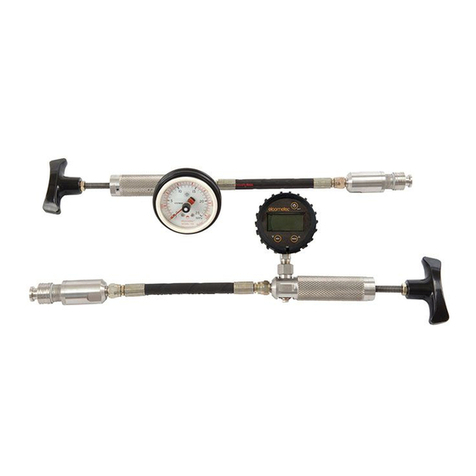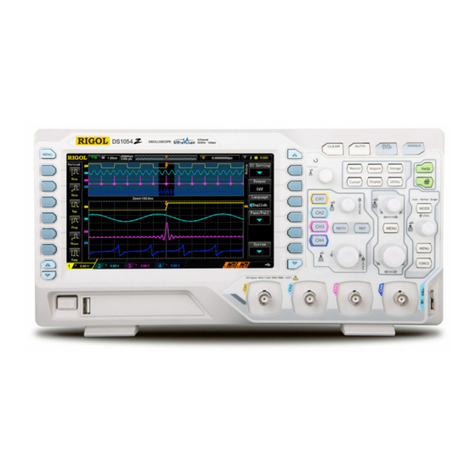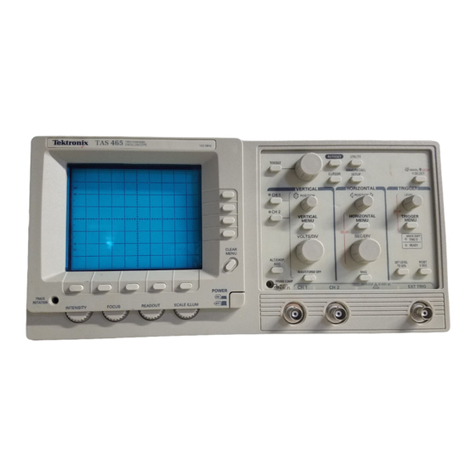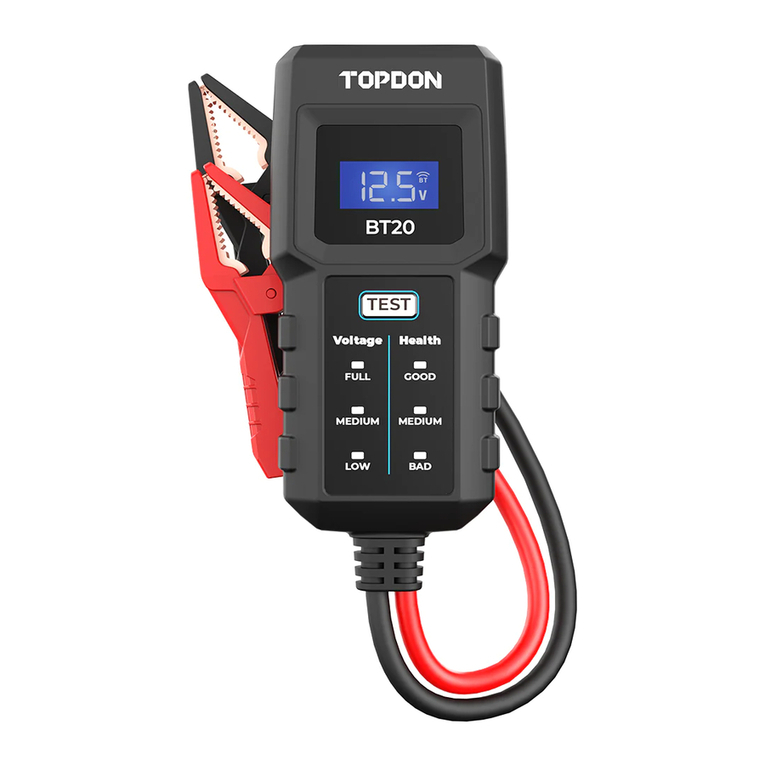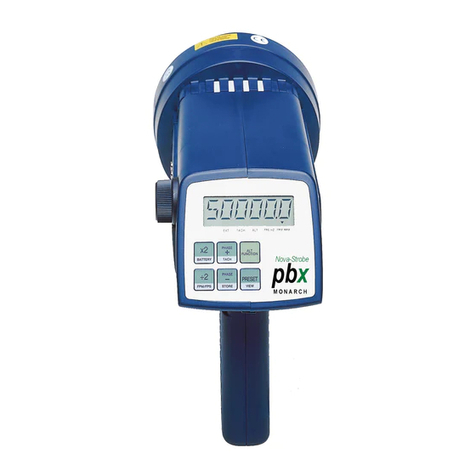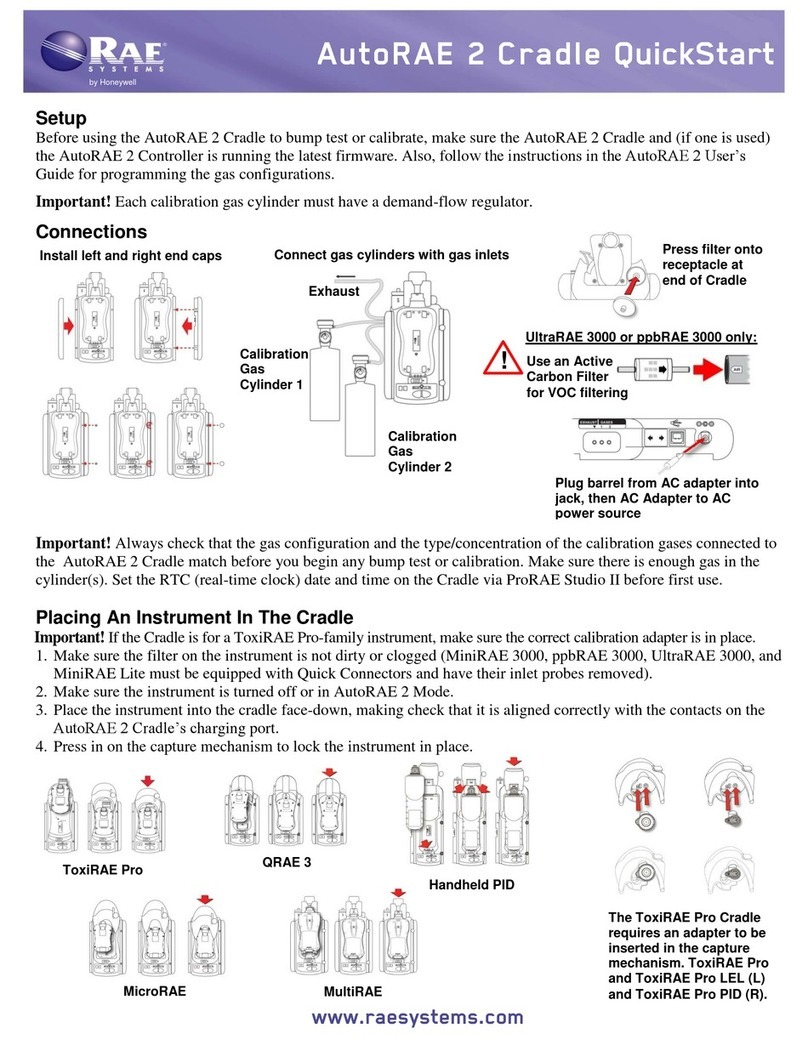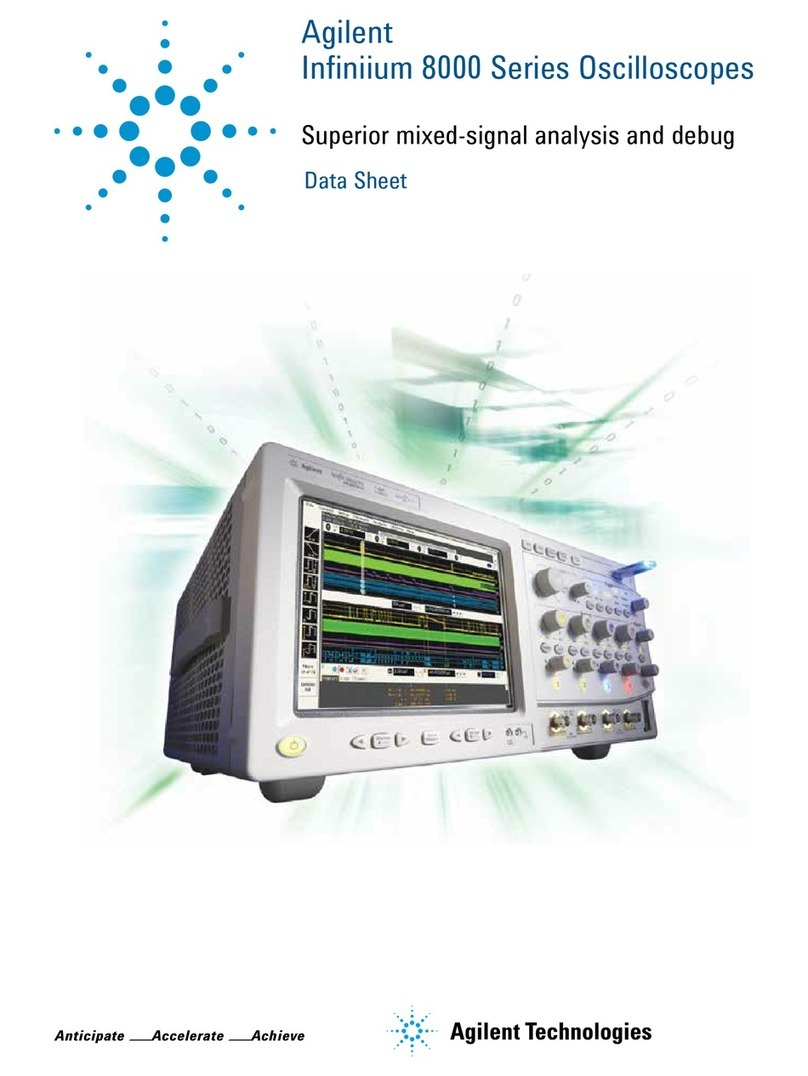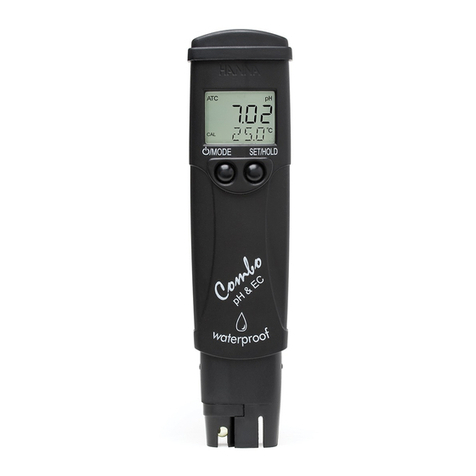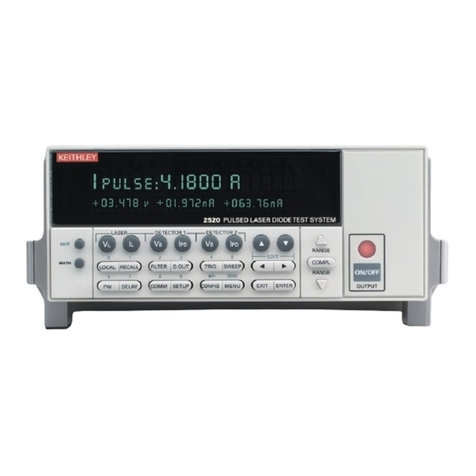Ericsson FSU 995 F User manual

FSU 995 FA
User’s manual
133ST010R1A

1
User’s manual for the FSU 995 FA
single fiber fusion splicer by Ericsson

2

3
Table of contents
Introduction.....................................................................................................................4
Safety Information...........................................................................................................5
Description of the FSU 995 FA ........................................................................................6
Setting up the splicer ......................................................................................................8
BASIC OPERATION.........................................................................................................9
Splicing quick guide ...........................................................................................9
Fiber preparation ..............................................................................................10
Splicer preparation ...........................................................................................12
Splicing mode and program selection..............................................................14
Automode splicing............................................................................................17
Manual mode splicing ......................................................................................18
Splice evaluation ..............................................................................................21
Splice protection ..............................................................................................23
ADVANCED OPERATION ..............................................................................................25
Fusion program structure .................................................................................25
Overview..........................................................................................25
Program name.................................................................................26
Fiber type.........................................................................................26
Splicing process ..............................................................................28
Program parameters........................................................................36
Pre-defined programs: Programs 01 - 10 .........................................................41
Program editing: Programs 11 - 50...................................................................43
Parameter editing review .................................................................................53
Special functions..............................................................................................55
Advanced splicing parameters........................................................55
Service functions: #-button .............................................................57
Advanced hot image analysis .........................................................60
Quick character selection ...............................................................61
Global parameters: Program 00 ......................................................61
Upload / Download Software ........................................................................................65
Maintenance.................................................................................................................66
Power connection ............................................................................................66
Fiber clamps and V-grooves.............................................................................67
Electrodes ........................................................................................................68
Mirror one .........................................................................................................70
Maintenance time table ...................................................................................70
Appendices
A-Troubleshooting ............................................................................................71
B-Technical Data..............................................................................................74
C-Parameter and program editing flow charts .................................................75
Index .............................................................................................................................80
Ericsson representatives...............................................................................................82
Table of contents

4
Introduction
The FSU 995 FA is designed to be “the only single fiber
splicer you’ll ever need. ” It handles all basic single fiber
splicing procedures, as well as more complex tasks such as
tapering, attenuator making and erbium splicing. At the heart
of the splicer’s operations is the hot core alignment process,
which individualizes the splicing procedure to fit your fiber
type and climactic conditions in order to offer the lowest
possible splice loss every time. Then, just to make sure, the
FSU 995 FA estimates this splice loss with an extremely
accurate splice loss estimation technique based on mode
coupling theory (micro-bending) and hot image processing.
There are two ways of categorizing the FSU 995 FA’s opera-
tions, and this manual will be organized according to both of
them:
On the one hand, the FSU 995 FA splicing programs can be
divided into two groups: Programs 01 - 10, which are the ten
splicing programs that come pre-defined with the machine,
and Programs 11 - 50 which are the forty editable slots you
have for designing your own splicing programs to suit your
special needs. In this manual, the instructions you will need
to run the pre-defined programs (01 - 10) will be the focus of
the section on “Basic Operation.” After you are familiar with
the FSU basics, you can go on to the second section, “Ad-
vanced Operation,” which outlines the structure of splicing
programs in greater detail, and describes the method for
designing your own.
On the other hand, FSU 995 FA splicing programs (including
the pre-defined ones) can be organized according to six
splicing processes: normal splicing, hot core alignment, small
core alignment, mode field matching, attenuator making, and
pulling or tapering. Whereas, this cross-cut of FSU opera-
tions will be only mentioned briefly in the section on “Basic
Operation”, it will play a large role in “Advanced Operation.”
Generally speaking, even though you will not need to specify
splicing processes when using the pre-defined programs, it is
always helpful to keep splicing process in mind when dis-
cussing any splicing program, since it specifies the steps the
FSU 995 FA goes through when splicing.
Operations
FSU 995 FA
Processes
Introduction

5
!
Safety Information
Maintenance Precautions
lNever use hard ob-
jects to clean the V-
grooves or electrodes.
Use the supplied brush,
or in the case of the V-
grooves, isopropyl alco-
hol and cotton swabs.
lNever use acetone for
cleaning any part of the
splicer.
lNever use cans with
compressed gas to clean
any part of the splicer.
lKeep the electrode
housing clean and dry at
all times.
lUse the electrode
cleaning program after
every time you clean or
change the electrodes,
otherwise the arc will be
unstable.
Operational Precautions
lDo not use the splicer
in locations where there
is a risk of explosion.
lNever touch the elec-
trodes when the splicer
is on.
lNever open the safety
shield or the power sup-
ply during operation.
lNever loosen any
screws except those
mentioned in this
manual, since you
may harm important
adjustments.
lDo not insert objects
other than stripped and
cleaned optical fiber or
cleaning and mainte-
nance tools into the
splicer.
General rule is...
The FSU 995 FA is a precision instrument, and must be treated as such.
Safety Information
Transport and Storage
lNever leave your
splicer in direct sunlight
or in places where it
might be exposed to
excessive heat (such as
in vehicles parked in the
sun).
lAlways transport the
splicer in its carrying
case to avoid damage to
its precision parts.
lKeep the humidity to a
minimum where the
splicer is stored. The
humidity must not ex-
ceed 95%.
lIf moisture forms on
the optics when moving
the splicer from an area
with very cold tempera-
ture to a warmer environ-
ment, let the splicer sit
and warm up before
using it.
lClose the safety shield
during transport.

6
Description of the FSU 995 FA
1
2
3
4
5
The FSU 995 FA is delivered
in a rugged, cabin-size carry-
ing case along with the basic
set of tools for splicing, and
this manual.
FSU995 FAfusionsplicer
Tool set with one electrode
brush, one set of tweezers, a
seven piece hexagonal key set,
and one hex wrench
Carrying case
Pair of spare electrodes
Two pairs of V-grooves
-Blue (125 mm/1mm)
-Black(250 mm/2mm)
2
3
4
5
Fiber fixture
(optional, see p. 23)
Holds fiber secure
during removal.
Left V-groove
Used in fiber
alignment. Left fiber clamp
Fixes fiber into V-
grooves.
Electrodes/
Electrode block
Heat oven
(optional, see p. 23)
Plug-in unit for
standard heat-shrink
sleeves.
Safety shield
For protection
during splicing
sequence.
Right fiber clamp
Fixes fiber into V-
grooves.
Right V-groove
Used in fiber
alignment.
Monitor and buttons
described on next
page.
1
Description of the FSU 995 FA

7
123
456
On/Off
Esc/c
Mode
Hot Image
Yes
No
Enter
0-9
0-9
0-9
Select/#
+
-
View
To turn splicer on and off.
To abort operations and to access
parameters.
To change splice mode
To flip through hot images.
To answer “yes” to programming questions.
To answer “no” to programming questions.
To enter one’s selections.
To choose first numerical place.*
To choose second numerical place.*
To choose third numerical place.*
To check battery and to access
service parameters.
To adjust focus.
To adjust focus.
Tochangecontentofmonitor.
Programming buttons
Monitor
Controls
Left arrows
Right arrows
Up arrow
Down arrow
Gap
Fuse
To move left fiber along its own
axis (e.g. toward right fiber).
To move right fiber along its own
axis (e.g. away from left fiber).
For axial fiber alignment.
For axial fiber alignment.
To set a fine gap or close a gap.
To initiate a splicing procedure.
On
Off Esc
*
Mode
Hot
Image
Yes No Enter 0 - 9 0 - 9 0 - 9 Select
#
+
_
View
Focus
16A Fuse
Output for video
Auxiliary 12V video output (see Appendix B)
2A Fuse
12V power input
RS 232 (see Appendix B)
2
3
4
5
6
TheFSU995 FAmonitorisorga-
nized into a viewing area that allows
you to see the fibers from two
different angles, and a text area
that is itself divided into two text
fields: a mode field and a message
field. The mode field informs you
whichmode andprogramsyou are
working with. The message field
poses questions, gives instructions
and tells you what it is doing.
Fibers from 1st angle
If you press VIEW, you then see the
fibers from the 2nd angle.
Mode field
Message field
Description of the FSU 995 FA
Buttons
Monitor
Rear panel
For example, to get the number ‘147’, you would press the first button once, the second button 4 times, and the third 7 times.
*
FSU 995 FA
Gap Fuse
Right
Left
Up
Down
FSU 995FA AUTO MODE
AUTO ALIGNING/FUSION

8
Setting up the splicer
Set-up checklist
Optical fiber
Fiber holders
Strippers
Cleaner
Cleaver
Cotton swabs
Isopropyl alcohol
Electrode brush
FSU 995 FA fusion splicer
FSU 995 FA manual
V-grooves
Heat-shrink oven
Heat-shrinkable sleeves
Power supply or battery
3
The adjacent set-up check-
list is not in any way exhaus-
tive, but it does present the
basics you should have at
hand before sitting down and
splicing.
V-grooves
The FSU 995 FA is delivered with two sets of V-grooves, blue
V-grooves and black V-grooves:
Use the blue V-grooves when you intend to clamp on bare
fiber. They are designed for fiber with tight secondary coat-
ing with a cladding diameter of up to 125 mm and secondary
coating diameter of up to 1 mm. (See also p. 11).
Use the black V-grooves when you intend to clamp on
primary coating. They are designed for fiber with a nominal
primary coating of 250 mm, as well as, loose-tube secondary
coated fibers with a tube diameter of up to 2 mm. (See also
p. 11).
It is also possible to order specially designed V-grooves from
Ericsson by contacting your local service representative. If
you do indeed need to change V-grooves, or install them for
the first time, you should follow the instructions on page 67.
Power connection
The FSU 995 FA can be operated by either a 12 V DC battery
or a power supply unit rated at 50-60 Hz. In both cases the
power cord is connected into the outlet marked PWR on the
rear panel of the splicer (see also diagram of rear panel on
previous page). If you are using the battery delivered by
Ericsson, keep in mind that the battery is not charged on
delivery (see p. 66).
Setting up the splicer

9
Fuse
Mode
On
Off
BASIC OPERATION - Quick guide
1
2
Connect the splicer to the power supply ................. 8
Prepare the fibers..................................................... 10
Strip, clean and cleave the fibers.
3Turn on the splicer and place the fibers................. 12
Note: The splicer will turn off automatically when you re-open the
safety shield after splicing.
4Select splicing mode and program......................... 14
Choose between the two splicing modes: Automode and Manual
mode. (Note that the splicer always starts in Automode when just
turned on). A list of the pre-defined splicing programs (01-10) is
found on page 16.
5Splice the fibers........................................................ 17
Press the fuse button.
6Check the splice....................................................... 21
Check the splice visually by pressing VIEW and scrolling through
stored images. Evaluate the splice quantitaly by taking note of the
estimated splice loss.
7Protect the splice ..................................................... 23
Protect the splice with a heat-shrinkable sleeve.
The following steps outline basic operation of the FSU 995 FA,
and refer to the pages where they are explained in greater detail.
BASIC OPERATION - Quick guide

10
Fiber preparation
Slip on a heat-shrinkable sleeve
1
Easily forgotten, yet so frustrating. Remember to always slip
a heat-shrinkable sleeve onto one of the fibers at the begin-
ning of fiber preparation.
Strip the fiber
2
First remove at least 50mm of secondary coating (true for
both tight and loose tube secondary coating) with a stripper
appropriate to the type of coating you have. Then remove
around 25 mm of the primary coating with a stripper de-
signed for primary coating. (See also pictures below).
It is important that you do not put undue stress on the
fibers by bending or crimping them.
v
Illustrations of strippers for secondary and primary coating
BASIC OPERATION - Fiber preparation
Loose tube secondary coating Tight secondary coating Primary coating
Clean the fiber
3
Clean the bare fibers with a tissue or a pair of cotton swabs
soaked in propanol or ethanol.
It is important that from this point on you are very careful
with the fibers to ensure that they do not become dirty
again (such as laying them down on a dusty working surface,
or even waving them around in the air).
It is also a good idea at this stage to check to be sure the V-
grooves are clean, and if not, wipe them down as well.

11
Cleave the fiber
4
Before cleaving the fiber, make sure the fiber is clean and
properly prepared (See steps 1-3).
Cleave the fibers using a high quality cleaving tool that offers
a flat end-face at an angle of less than 1ofrom the perpen-
dicular (less than 0.5o for small core fiber). To ensure good
splicing, you must also observe the instructions for cleaving
lengths detailed below.
Cleaving lengths (plus V-groove selection)
Use Blue V-grooves
(Clamping on bare fiber) Use Black V-grooves
(Clamping on primary coating)
Loose secondary coating
> 12 mm
primary coating
> 5 mm
> 5 mm
Primary coating
Tight secondary coating
Primary coating
> 17 mm
> 17 mm
Fiber preparation checklist
The correct V-grooves have been selected
The fiber clamps and V-grooves are clean
The fibers are completely stripped
The fibers are clean
The end-faces are well-cleaved
The correct cleaving lengths have been achieved
Fiber preparation checklist
Fiber preparation is often
the decisive phase in
successful splicing, so it is
important to ensure that
you can check off on the
adjacent points.
BASIC OPERATION - Fiber preparation

12
On
Off
Splicer preparation
Turn on the splicer
1
Turn on the splicer by pressing the ON/OFF button in the
upper left-hand corner. (Remember that the splicer will turn
off automatically when you open the safety shield after splic-
ing.)
The splicer always starts in Automode, and thus will read
“FSU 995 FA AUTO MODE”in the mode field. In the mes-
sage field you will get a message telling you that it is calibrat-
ing parameters. Once calibration is completed, the splicer
will tell you to “INSERT FIBERS”and to “CLOSE SAFETY
SHIELD.”
BASIC OPERATION - Splicer preparation
FSU 995 FA AUTO MODE
PARAMETER UPDATING...
CLOSE SAFETY SHIELD
“
“
INSERT FIBERS
Insert fibers
2
Place the fibers into the V-grooves until they are visible in the
monitor, and then close the clamps. Make sure to avoid
sliding the fibers along the V-grooves, but rather position
them over the V-grooves and then tilt them down into place
(see picture below).
Proper (and not so proper) insertion of the fibers:
2
1

13
Close the safety shield
3
Once you have placed the fibers so that you see them in the
monitor and closed the fiber clamps, you must also close the
safety shield by sliding it smoothly into place.
At this point the messages, “CLOSE SAFETY SHIELD”and
“INSERT FIBERS”will be replaced with a new series of mes-
sages. The first will inform you which splicing program was
last used (for example, “SM + SM P01”). The other mes-
sages will tell you about coming next stages in the splicing
process: “AUTO ALIGNING/FUSION”and “PRESS FUSE
BUTTON.”But first....
Program name Program #
(eg. SM + SM P01)
PRESS FUSE BUTTON
“
“
AUTO ALIGNING/FUSION
Check the fibers
4
Before you take any more steps toward splicing, you should
check the fibers in the monitor to make sure they are clean
and well-cleaved. (See illustrations below for examples of
problems). If you see any defects, you should take the fibers
out and re-prepare them. Don’t forget to check both views,
which you can alternatively access by pressing VIEW.
If you are having difficulty seeing the fibers, you should try
adjusting the focus by pressing the buttons and .
-
+View
Check fibers in other view
Upper view
Lower view
Dust on fiber Tang Chip Large cleave
angle
The following pictures represent fiber preparation defects
that necessitate re-preparation of the fibers.
BASIC OPERATION - Splicer preparation

14
Splicing mode and program selection
Select splicing mode
1
Though the splicer is saying in the message field to “PRESS
FUSE BUTTON,”you should make sure the correct splicing
mode and program are selected.
As mentioned earlier, the default splicing mode is Automode,
and this will be the mode the splicer is in when you just turn it
on. In Automode, the splicer automatically carries out fiber
alignment and initiates fusion. However, if you want to manu-
ally align the fibers and initialize splicing, you can change to
Manual mode by pushing the MODE button. The mode field
will then read to “FSU 995 FA MANUAL MODE.”To change
back to Automode, just push MODE again. Remember that
you can always check which mode you are in during splicer
preparation by reading what is displayed in the mode field.
Mode
Change splicing mode
FSU 995 FA MANUAL MODE
FSU 995 FA AUTO MODE
“
“
toggle between by pushing MODE
Select splicing program
2
In this section on Basic Operation, we are only going to use
the pre-defined programs (Programs 01-10) as examples, but
you would follow the same selection procedure if you wanted
to load in one of your own programs created through the
instructions outlined in the section on Advanced Operation.
AThe first step is to press the ENTER button. At this point
both the mode and the message field will change. The mode
field will display the current splicing program, and the mes-
sage field will ask you if you want to change it. For the pur-
poses of demonstration, we are going to assume that the
current splicing program is program 01, NORMAL SM +SM.
BIf you press Yes , the message field will then be open for
you to enter a new program.
If you press No , you will jump to step F.
Enter
To change splicing program
“
“
NORMAL SM + SM P01
NEW PROGRAM?
Yes
cont., next page
BASIC OPERATION - Splicing mode and program selection
To see a list over the pre-defined programs (Programs 01-
10), you can either look on page 16 of this manual, or
follow the instruction in optional step BB on the next page
as to how you can access the screen-viewer.
Confirm wish to change

15
NORMAL SM+SM P01
DSF SM+SM P02
TITAN SM+SM P03
NORMAL MM+MM P04
ECCENTRIC SM+SM P05
ERBIUM+SM MCVD P06
ERBIUM+SM OVD P07
SM ATTENUATOR P08
SM FIBER LENS P09
SM 80 UM MICRON P10
P11
P12
P13
P14
BB As an optional step, you can then press VIEW to see the
sceen-viewer with a list over all of the the splicing programs
in memory. To scroll through the pages, press VIEW.
To escape from the screen-viewer, press ESC.
View
Screen-viewer for selecting a new program
0-9
0-9
OR
Select new program
CTo select a new program, you can either scroll through the
programs using the and buttons, or you can type in
the number of the program you want using the first two
numerical buttons (from the left). Let’s say we wanted to
splice titanium fibers (P03). To do so we would either press
the button twice, or type in “0”with the first numerical
button and “3”with the second.
DYou then confirm your selection by pressing ENTER.
EThe mode field will then display your new selected pro-
gram (In our example, “TITAN SM + SM”), and in the mes-
sage field the splicer will ask if you want to change the pro-
gram again. If you are satisfied with the splicing program
displayed, press No .
FThe splicer will then ask whether you want to edit param-
eters. Splicing program editing is a function taken up in the
section on Advanced Operation (see p. 43), but you should
keep in mind that it is not possible to edit the parameters in
Programs 01-10 (the ones we are using here as examples).
So to end splicing program selection and return to splicing
mode, you should press No again.
The splicer will then update the parameters in memory so
they match those of the splicing program you have chosen,
and return to splicing mode (see definition, following page)To
see a list over the pre-defined programs (Programs 01-10),
you can either look on page 16 of this manual, or follow the
instruction in optional step BB on the next page as to how
you can access the screen-viewer.
Enter
“
“
TITAN SM + SM P03
NEW PROGRAM?
No
“
“
TITAN SM + SM P03
EDIT PARAMETERS?
No
Enter new program
Open screen-viewer
BASIC OPERATION - Splicing mode and program selection
Confirm program choice
Confirm parameters
“
“
UPDATING PARAMETERS...
NORMAL SM + SM P01
EXIT SCREEVIEW, ESC

16
1250$/6060
3
'6)6060 3
7,7$16060 3
1250$/0000 3
(&&(175,&6060 3
(5%,80600&9' 3
(5%,80'6)29' 3
60$77(18$725 3
60),%(5/(16 3
60800,&521 3
3
3
3
3
NORMAL SM+SM
P01
NEW PROGRAM?
PREFUS TIME 0.2 S
PREFUSE CURR 10.0 MA
GAP 50.0 UM
OVERLAP 10.0 UM
FUSION TIME 1 0.3 S
FUSION CURR 1 10.5 MA
FUSION TIME 2 2.0 S
FUSION CURR 2 16.3 MA
FUSION TIME 3 2.0 S
FUSION CURR 3 12.5 MA
LEFT MFD 9.8 UM
STANDARD FIBER
NORMAL SPLICING
Viewing splicing program parameters
If you wish to look at a listing of the splicing program param-
eters for a particular program you should press ENTER, as if
you wanted to change splicing program, and then, rather
than answer “Yes”or “No”to the question “New program?,”
press VIEW. This will bring up the screen-viewer for the
program in memory (see adjacent example). You can flip
through pages by pressing VIEW, and when you are finished
reviewing the parameters, you press ENTER to exit the
screen-viewer (or press YES or NO, thereby directly entering
the sequence for splicing program selection at step B, see p.
14). You should keep in mind, though, that this is only an
option for non-confidential programs.
Splicing programs 01-10
* Splicing processes are explained in the section on Advanced Operation, see p. 28.
**
Screen-viewer with parameters for
Program 01
BASIC OPERATION - Splicing mode and program selection
Program Name Prog. No. Fiber type Splicing process*
NORMAL SM + SM 01 Standard single fiber Normal splicing
DSF SM + SM 02 Depressed cladding fiber Normal splicing
TITAN SM + SM 03 Titanium fiber Normal splicing
NORMAL MM + MM 04 Mulitmode fiber Normal splicing
ECCENTRIC SM + SM 05 Standard single fiber Hot core alignment
with eccentric core
ERBIUM + SM MCVD** 06 Erbium fiber with Mode field matching
single fiber
ERBIUM + DSF OVD** 07 Erbium fiber with Mode field matching
dispersion shifted fiber
SM ATTENUATOR 08 Standard single fiber Attenuator making
SM FIBER LENS 09 Standard single fiber Pulling or tapering
SM 80 UM MICRON 10 Single fiber with Normal splicing
80 mm core
MCVD and OVD refer to fiber production methods, and respectively stand for
“Modified Chemical Vapor Deposition”and “Outside Vapor Deposition.”
Splicing mode
The term “splicing mode”in singular is not to be confused
with the two splicing modes: Automode and Manual mode.
When the FSU 995 is “in splicing mode,”or “returns to
splicing mode,”it means that it is ready to splice on your
command. In short, it represents a state of splicing readi-
ness. The FSU 995 FA exits splicing mode whenever you
press ENTER to select a program or to edit a program.

17
At this point you should have chosen Automode for the
splicing mode (see p. 14), and a splicing program. Continu-
ing with the example taken up in the section on splicing
program selection, we will assume you have chosen Program
03. This will give you the adjacent screen, with “FSU 975 FA
AUTO MODE”in the mode field and the program name and
program number in the message field.
FSU 995 FA AUTO MODE
TITAN SM + SM P03
Once the fibres are in place and the safety shield has been
closed, the splicer will then display a series of messages in
the message field that tell you that it is ready.
AUTO ALIGNING/FUSION
PRESS FUSE BUTTON
“
“
Splicer ready
1
Automode splicing
Start splicing
2Fuse
Start automatic splicing
To start the automatic splicing sequence, press FUSE . The
splicer will then automatically align the fibers roughly, pre-
fuses, focuses the view, performs fine alignment, and finally
fuse the fibres. TITAN SM + SM P03
ROUGH ALIGNMENT
PREFUSION WILL START
ROUGH ALIGNMENT
ALIGNING FIBERS
SPLICING WILL START
SPLICING...
“
“
During the entire sequence the chosen splicing program will
be displayed in the mode field (in our example, “TITAN SM +
SM P03”), while in the message field the splicer will keep you
abreast of what it is doing.
If at any point the splicer cannot carry out some part of the
automatic sequence, a fault message will appear in the
message field. If this occurs you should look at Trouble-
shooting in Appendix A, p. 71.
You can interrupt the automatic sequence before the fibers
are fused by pressing the button. Press FUSE to re-start
the splicing sequence. *
BASIC OPERATION - Automode splicing

18
At this point you should have chosen Manual mode for the
splicing mode (see p.14), and a splicing program. To continue
our example, we will assume you have chosen Program 03
for titanium fiber splicing. This will give you the adjacent
screen, with “FSU 995 FA MANUAL MODE”in the mode field
and the program name (“TITAN SM + SM”) and program
number (P03) in the message field.
The splicer will then display a series of messages in the
message field that tell you that it is ready.
READY FOR PREFUSING
PRESS FUSE BUTTON
“
“
Splicer ready
1
Roughly align fibers
2
In order to roughly align the fibers with respect to each other,
you should alternately press the and buttons for both
the right and left fibers until the outer edges of the fibers line
up.
When you think the fibers are lined up, you can start bringing
the fibers towards each other by alternatively pressing the
and buttons for each of the fibers. Your goal is a gap
equivalent to half a diameter of a fiber, centered horizontally
in the monitor (see illustration below).
You should then press the VIEW button to ensure that the
gap is also correct from the other camera angle.
+
After rough alignment the situation should be as follows:
the outer edges of the fibers line up, and the gap between
their end-faces is the width of half a fiber diameter, and
centered on the monitor.
Outer diameter alignment
+
Gap alignment
View
Check gap in other view
Gap
centered
Gap width of half
a fiber diameter
Outer edges lined up
Manual mode splicing
FSU 995 FA MANUAL MODE
TITAN SM + SM P03
BASIC OPERATION - Manual mode splicing
Table of contents
Popular Test Equipment manuals by other brands
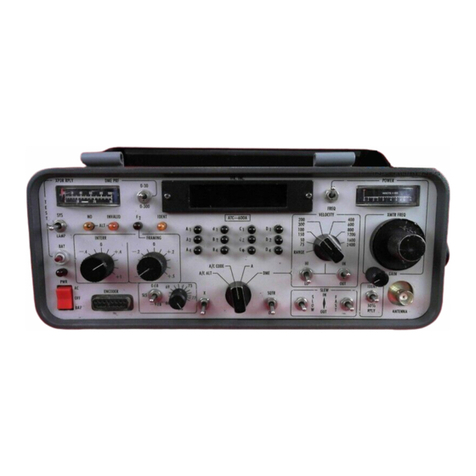
Aeroflex
Aeroflex ATC-600A-2 Operation manual
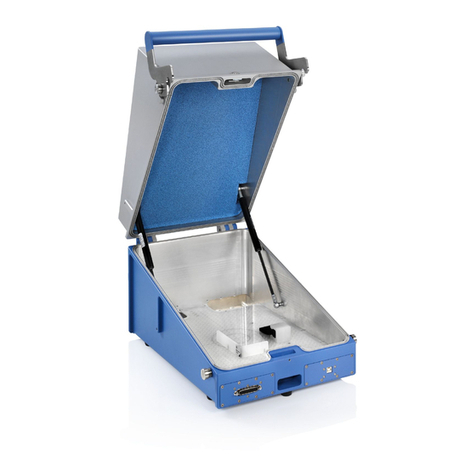
Rohde & Schwarz
Rohde & Schwarz R&S CMU-Z10 manual
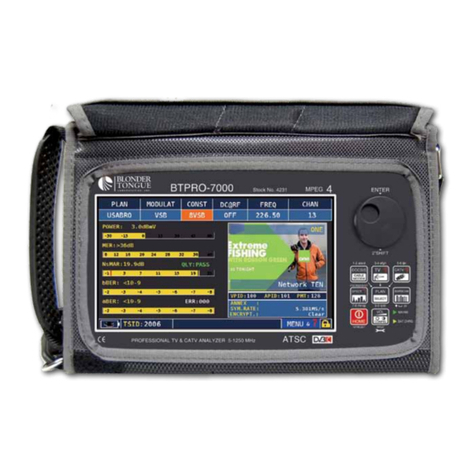
Blonder tongue
Blonder tongue BTPRO-7000 instruction manual
Alcohawk
Alcohawk Beacon quick guide
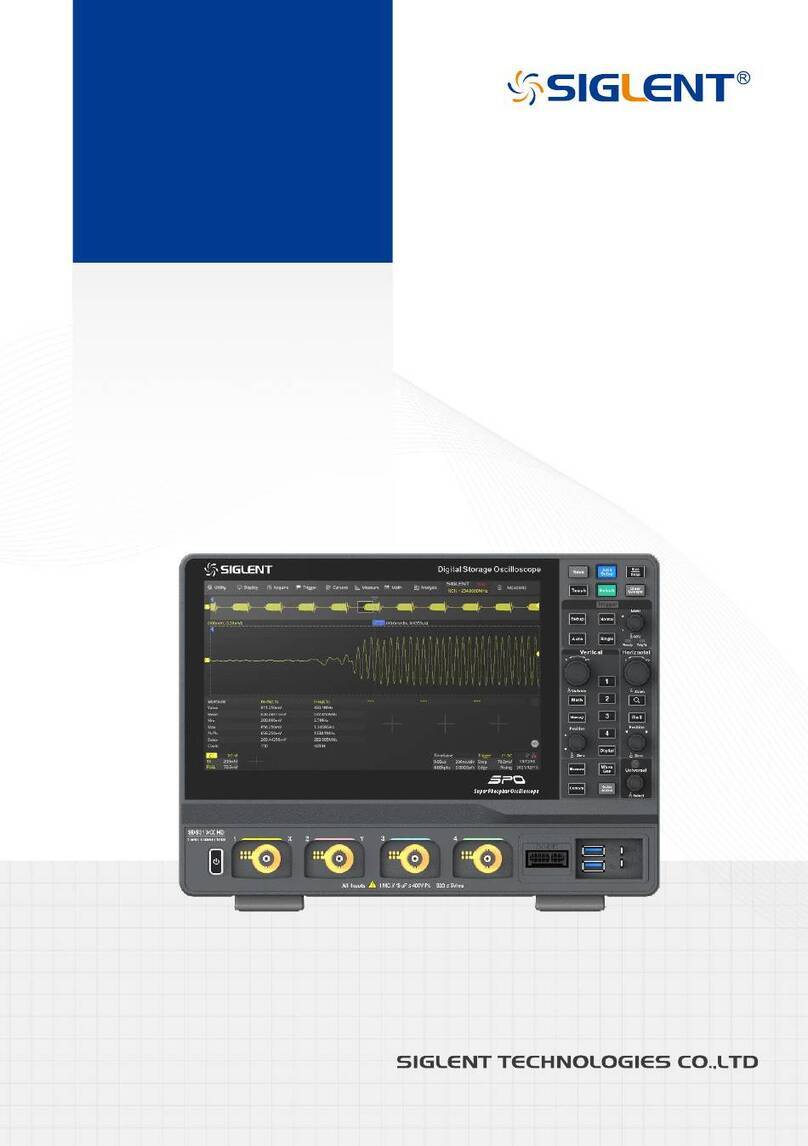
SIGLENT TECHNOLOGIES
SIGLENT TECHNOLOGIES SDS3000X HD Series quick start

First Stop Safety
First Stop Safety BattPAT user manual


